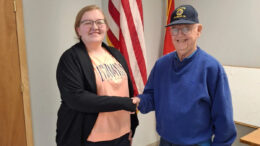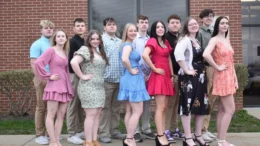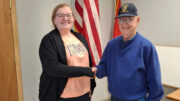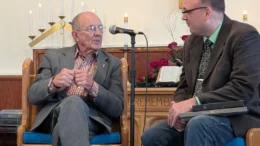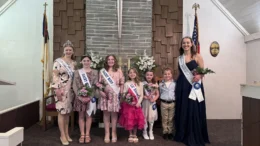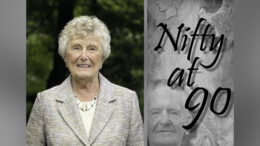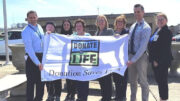“No door should be closed to people willing to spend
the hours of effort to make their dreams come true”
– Associate Justice Ruth Bader Ginsburg
By BO MYERS – Student contributor
Justice Ginsburg was born Joan Ruth Bader on March 15, 1933, in Brooklyn, New York. She was the second daughter of Nathan and Celia Bader, and grew up in a low-income, working-class neighborhood in Brooklyn. Her father worked as a farrier, and her mother a seamstress at a garment factory.
At James Madison High School in Brooklyn, Ginsburg worked diligently and excelled in her studies. Sadly, her mother struggled with cancer throughout Ginsburg’s high school years and died the day before Ginsburg’s graduation.
Ginsburg attended Cornell University in 1954, earning her bachelor’s degree in government, finishing first in her class. That same year, she married Martin D. Ginsburg, an aspiring law student.
The early years of their marriage were challenging, as their first child, Jane, was born shortly after Martin was drafted into the military in 1954. He served for two years.
After graduating from Cornell, Ginsburg subsequently started attending Harvard Law School.
At Harvard, Ginsburg learned to balance life as a mother and her new role as a law student. She encountered a very male-dominated, hostile environment at Harvard with only eight other females in her class of more than 500. She often faced gender discrimination. Ginsburg and her female colleagues were called on in class for “comic relief” and were even excluded from using certain library sections.
Ginsburg, and her newly started family faced yet another challenge when her husband Martin contracted testicular cancer in 1956, requiring intensive treatment and rehabilitation. Ginsburg attended to her young daughter and convalescing husband, taking notes for him in classes while she continued her own law studies.
Martin recovered, graduated from law school, and accepted a position at a New York law firm.
Ginsburg transferred to Columbia Law School in 1958 for her final year. She graduated first in her class in 1959.
Ginsburg continued to encounter gender discrimination while seeking employment after graduation.
She clerked for U.S. District Judge Edmund L. Palmieri (1959–61). Ginsburg then taught at Rutgers University Law School (1963–72), and at Columbia University (1972–80), where she became the school’s first female tenured law professor.
During the 1970s, she served as the director of the Women’s Rights Project of the American Civil Liberties Union. She argued six landmark cases on gender equality before the U.S. Supreme Court. These landmark cases solidified Ginsburg as a legal mind to be reckoned with, across the country.
In 1980, President Jimmy Carter appointed Ginsburg to the U.S. Court of Appeals for the District of Columbia.
She served there for thirteen years until she was appointed to the U.S. Supreme Court in 1993 by President Bill Clinton, selected to fill the seat vacated by Justice Byron White. President Clinton saw her as a replacement with the intellectual and political skills to deal with the more conservative members of the court.
During her confirmation hearing, several senators expressed concern over how she could transition from social advocate to Supreme Court Justice. In the end, she was easily confirmed by the Senate, 96–3.
She became part of the Supreme Court’s liberal side presenting a strong voice in favor of gender equality.
In 1996, Ginsburg wrote the Supreme Court’s landmark decision in United States v. Virginia, the decision held that the state-supported Virginia Military Institute could not refuse to admit women.
In 1999, she was awarded the American Bar Association’s Thurgood Marshall Award for her contributions to gender equality and civil rights.
She gained considerable attention for her dissenting opinion in the case of Bush v. Gore. She objected to the court’s majority opinion favoring Bush. Ginsburg deliberately and subtly concluded her decision with the words, “I dissent.” A significant difference in the tradition of including the adverb “respectfully.”
On June 27, 2010, Ginsburg’s husband died of cancer. She described Martin as her motivation and “the only young man I dated who cared that I had a brain.”
On June 26, 2015, the Supreme Court handed down a major decision, with a 5–4 majority ruling in Obergefell v. Hodges that made same-sex marriage legal in all 50 states. Ginsburg was instrumental in the decision, having shown public support for the idea in past years by officiating same-sex marriages and by challenging arguments against it during the early proceedings of the case.
In 2016, Ginsburg released a book titled My Own Words, a memoir filled with her writings as far back as her junior high school years. The book became a New York Times Best Seller.
In May 2020, one day after the Court heard arguments for the first time via teleconference due to the coronavirus pandemic, she announced that she had been hospitalized to undergo a nonsurgical treatment for a gallbladder infection.
In July 2020, Ginsburg revealed she was undergoing chemotherapy for a “recurrence of cancer” on her liver, and was “yielding positive results.”
Ginsburg died on Sept. 18, 2020, at her home in Washington, D.C., from complications of metastatic pancreatic cancer.
The night she died, thousands of people gathered outside of the United States Supreme Court building in Washington, D.C., to mourn Justice Ginsburg.
“Our nation has lost a jurist of historic stature,” Chief Justice John Roberts said in a statement. “We at the Supreme Court have lost a cherished colleague. Today we mourn, but with confidence that future generations will remember Ruth Bader Ginsburg as we knew her, a tireless and resolute champion of justice.”
Bo Myers is a student at Cranberry High School and a member of Cranberry Chronicles, the school’s journalism/publications class.






